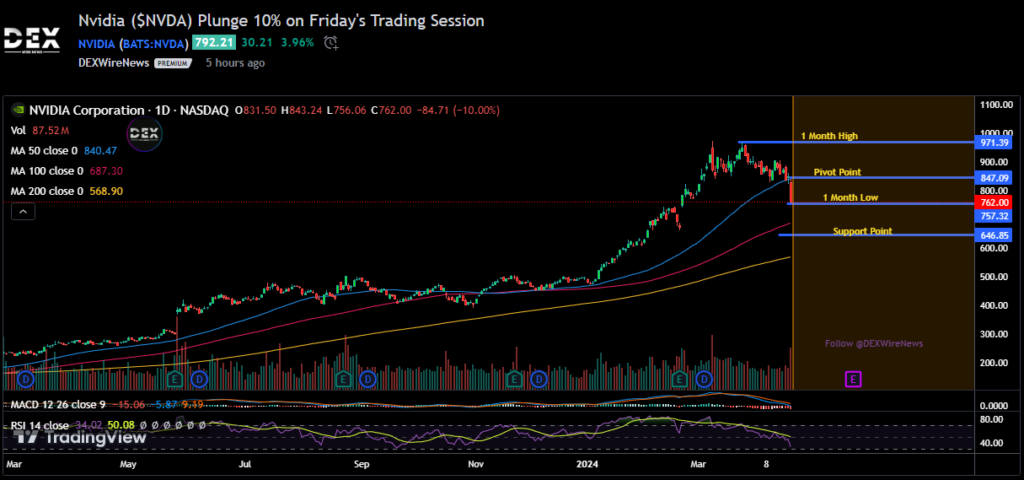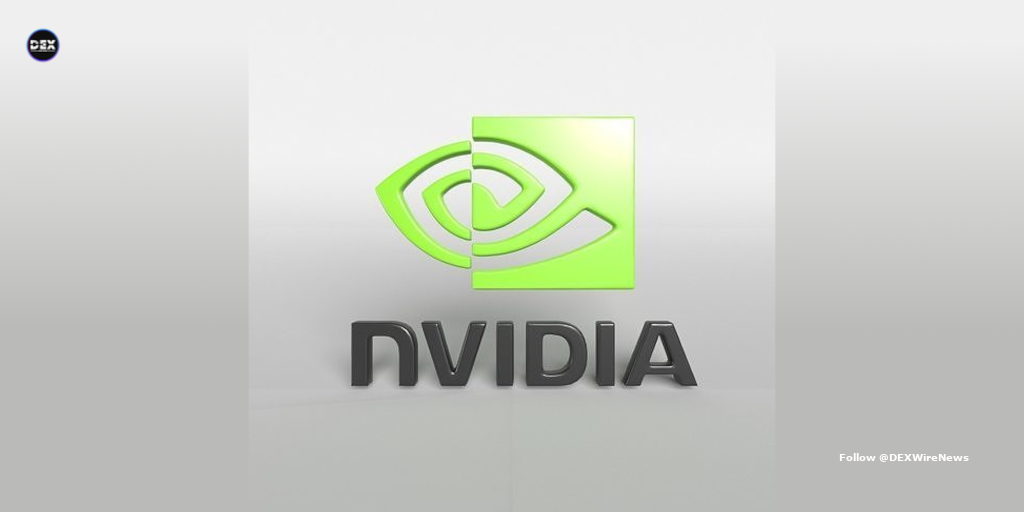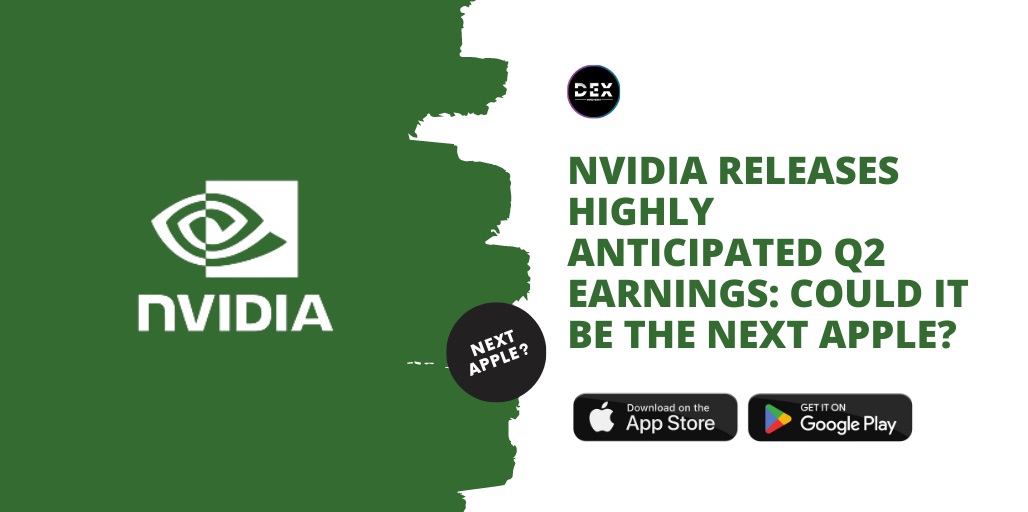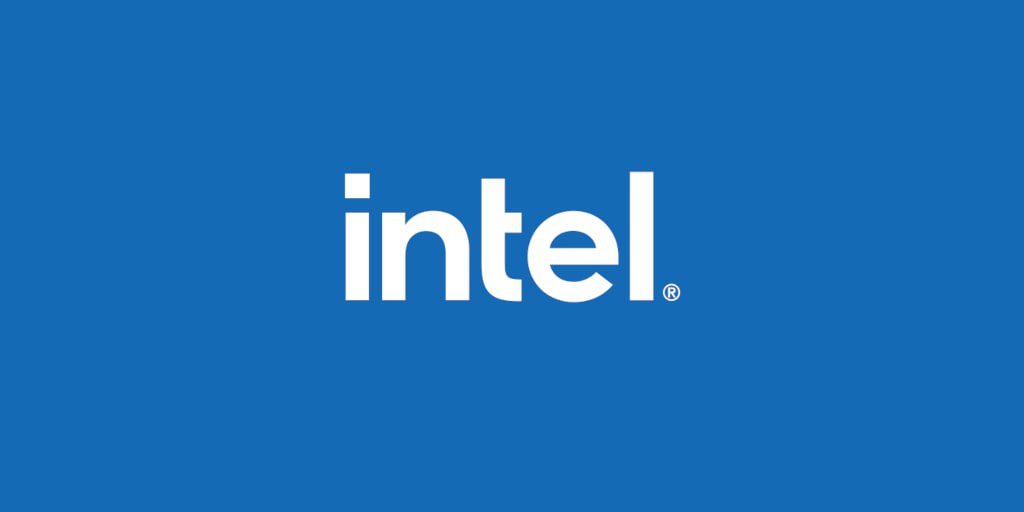NVIDIA (NASDAQ: $NVDA) is a technology company founded in 1993 that pioneered accelerated computing GPUs in 1999. This sparked gaming growth, redefined graphics, enabled modern AI, and now powers industrial digitalization as a full-stack computing infrastructure provider.
On March 18, 2024, NVIDIA took the stage at the GTC AI conference to introduce a series of groundbreaking advancements that promise to shape the future of artificial intelligence, 6G technology, and quantum computing. From lifelike digital humans to cutting-edge wireless research platforms, NVIDIA demonstrated its commitment to pushing the boundaries of innovation.
NVIDIA: Pioneering AI for Lifelike Avatars
NVIDIA’s digital human technologies, such as the Avatar Cloud Engine (ACE), NVIDIA NeMo, and NVIDIA RTX, empower industry developers to craft stunningly realistic avatars and dynamic game characters. These AI-powered solutions enable natural language interactions, facial animations, and ray-traced rendering, making conversations with digital humans more engaging and immersive.
“NVIDIA offers developers a world-class set of AI-powered technologies for digital human creation,” said John Spitzer, vice president of developer and performance technologies at NVIDIA. “These technologies may power the complex animations and conversational speech required to make digital interactions feel real.”
Leading developers like Hippocratic AI, Inworld AI, and UneeQ have already embraced NVIDIA’s digital human technologies, creating innovative applications in healthcare, customer service, and gaming. For instance, Hippocratic AI has developed a safety-focused Healthcare Agent powered by large language models (LLMs) and NVIDIA’s ACE microservices, enabling realistic patient interactions.
NVIDIA’s 6G Research Cloud: Innovating Connectivity
NVIDIA’s 6G Research Cloud platform is a game-changer for researchers working on the next phase of wireless technology. This open, flexible, and interconnected platform empowers researchers with a novel approach to develop 6G technologies that will connect trillions of devices with cloud infrastructures, enabling a hyper-intelligent world.
“The massive increase in connected devices and host of new applications in 6G will require a vast leap in wireless spectral efficiency in radio communications,” said Ronnie Vasishta, senior vice president of telecom at NVIDIA. “Key to achieving this will be the use of AI, a software-defined, full-RAN reference stack and next-generation digital twin technology.”
The 6G Research Cloud platform comprises the NVIDIA Aerial Omniverse Digital Twin for 6G, the Aerial CUDA-Accelerated RAN, and the Sionna Neural Radio Framework. These components enable researchers to simulate and test 6G networks in real-time, leveraging AI and machine learning models at scale.
Leading Industry Partnerships Propel NVIDIA 6G
NVIDIA has forged strategic partnerships with industry leaders to drive the development of 6G technologies. Companies like Ansys, Arm, ETH Zurich, Fujitsu, Keysight, Nokia, Northeastern University, Rohde & Schwarz, Samsung, SoftBank Corp., and Viavi are among the first adopters and ecosystem partners of the NVIDIA 6G Research Cloud platform.
Samsung’s Charlie Zang, senior vice president of Samsung Research America, emphasized the transformative potential of this collaboration, stating, “The future convergence of 6G and AI holds the promise of a transformative technological landscape. This will bring seamless connectivity and intelligent systems that will redefine our interactions with the digital world, ushering in an era of unparalleled innovation and connectivity.”
Japan Advances in Quantum Computing Research
Furthermore, NVIDIA will power Japan’s new ABCI-Q supercomputer, significantly boosting the country’s quantum computing initiative. Developed through a collaboration between Fujitsu, G-QuAT, AIST, ABCI-Q will enable high-fidelity quantum simulations for industry research.
Masahiro Horibe, deputy director of G-QuAT/AIST, highlighted, “ABCI-Q will let Japanese researchers explore quantum computing technology to test and accelerate the development of its practical applications. The NVIDIA CUDA-Q platform and NVIDIA H100 will help these scientists pursue the next frontiers of quantum computing research.”
ABCI-Q, expected to be deployed early next year, is designed for integration with future quantum hardware and will be used to advance quantum circuit simulation, quantum machine learning, and the development of classical-quantum hybrid systems.
Accelerating Enterprise AI with SAP
NVIDIA also announced a partnership expansion with SAP SE, focused on accelerating enterprise customers’ ability to harness the transformative power of data and generative AI across SAP’s portfolio of cloud solutions and applications.
The partnership intends to create and provide SAP Business AI, which encompasses scalable, industry-tailored generative AI features within SAP’s Joule copilot and its cloud solutions. NVIDIA’s generative AI foundry service will be used to fine-tune LLMs for domain-specific scenarios, and NVIDIA NIM microservices will be deployed to accelerate inference performance.
“Enterprise customers want to leverage state-of-the-art technology that delivers real business value,” said Christian Klein, CEO of SAP SE. “Strategic technology partnerships, like the one between SAP and NVIDIA, are at the core of our strategy to invest in technology that maximizes the potential and opportunity of AI for business.”
The partnership will explore innovative use cases leveraging SAP S/4HANA Cloud, SAP SuccessFactors, and SAP Signavio. It will also unify AI data sources with SAP Datasphere and utilize LLMs for the ABAP programming language.
NVIDIA Stock Performance
NVIDIA (NVDA) took a hit on Friday, ending the session down 10.0% at $762. Despite this decline, NVDA has maintained strong performance, with a year-to-date gain of 53.87% and a one-year surge of 181.78%. As of Monday, April 22, the stock had recouped some of the losses, rising 3.42% as of 1:12 PM EDt to $788.37.
At the close of trading of Friday, NVIDIA was below its 50-day moving average of $840.47 but remained above its 200-day moving average of $568.90. Over the past year, the stock has traded as high as $974.00 and as low as $262.25. The company’s market cap is currently $1.91 trillion, with an average trading volume of 53.14 million shares over the past three months.
As of March 28, 2024, short interest in the company stood at 28.36 million shares, indicating a decrease of 6.48%, representing approximately 1.18% of the total float.

Nvidia’s Q1 2025 Earnings: Key Projections
Nvidia’s stock has declined 8% since its peak in late March. All eyes now are on the company’s imminent fiscal first quarter 2025 earnings report, which is expected to influence its future trajectory.
Anticipated net sales are expected to reach $24.22 billion, marking a remarkable 237% surge from the prior year. Projections also indicate a forecasted gross margin of 77.03%, a substantial increase of 13 percentage points. Additionally, adjusted earnings per share are forecasted to rise to $5.50, reflecting an impressive 405% surge.
Although Nvidia had previously guided investors to expect a 300% revenue growth to $24 billion in Q1 2025, there is speculation about potential adjustments to its Q2 2025 revenue growth guidance. Analysts’ forecasts paint a slightly more conservative picture, predicting an 82% revenue increase to $11 billion, with gross margins expected to stabilize at 75.83%.
Analysts Bullish on NVDA
Wall Street analysts are bullish on NVDA stock, unanimously recommending a strong buy. Their forecasts range from a high of $1,400.00 to a low of $620.00. This average target indicates a 31.88% increase from the current price of $762.00. Analyst William Stein from Truist predicts a target of $1,177, citing anticipated demand growth in 2024 and 2025. Additionally, HSBC and Bank of America have set targets of $1,050 and $1,100 respectively.
However, not all analysts share this bullish outlook. D.A. Davidson analysts, featured in a CNBC report, maintain a Neutral rating on NVDA, expressing concerns about potential cyclical downturns by 2026, despite expectations of a strong performance in 2024 and possibly into 2025.
Should You Invest In NVDA?
NVIDIA’s recent AI, 6G, and quantum computing innovations showcase its commitment to groundbreaking technologies. Partnerships with industry giants like SAP and advancements like the ABCI-Q supercomputer highlight its expanding influence.
Despite a recent stock dip, NVDA’s strong year-to-date and one-year performance indicate resilience. Analysts predict substantial growth in Q1 2025 earnings, albeit with slightly tempered expectations for Q2. Overall, Wall Street remains bullish on NVDA, though some express caution about future cyclical trends.
Click Here for Updates on Nvidia – It’s 100% FREE to Sign Up for Text Message Notifications!
Disclaimer: This website provides information about cryptocurrency and stock market investments. This website does not provide investment advice and should not be used as a replacement for investment advice from a qualified professional. This website is for educational and informational purposes only. The owner of this website is not a registered investment advisor and does not offer investment advice. You, the reader / viewer, bear responsibility for your own investment decisions and should seek the advice of a qualified securities professional before making any investment.




